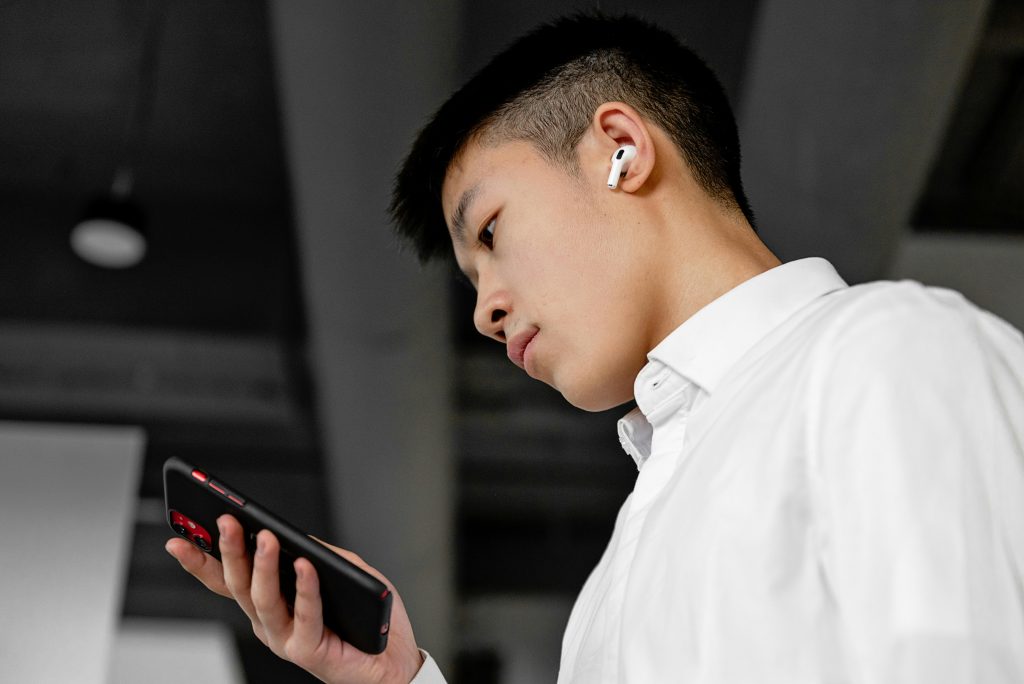- Translation earbuds provide real-time, hands-free language translation, making cross-language communication easier for travel, work, and social situations.
- They rely on a combination of microphones, Bluetooth, and AI-driven smartphone apps to capture speech, process translations, and deliver audio almost instantly.
- Accuracy is strong for common phrases and casual conversations but may struggle with slang, idioms, regional accents, and noisy environments.
- Popular models support over 40 languages, with some offering two-way translation for smoother interactions between speakers.
- Accessibility benefits include support for non-native speakers, travelers, multilingual households, and, in some cases, individuals with mild hearing impairments.
- Privacy considerations are important, as cloud-based processing may transmit speech data; offline modes and app permissions can help protect sensitive conversations.
In a globalized world, communication across languages is more important than ever. Whether you’re traveling, attending international meetings, or simply chatting with friends who speak another language, the barrier of language can be frustrating. Translation earbuds have entered the market as a solution, promising real-time language translation in a small, wearable device. But the big question remains: do they actually work, and are they practical for everyday use? In this article, we’ll explore everything you need to know about translation earbuds, their benefits, limitations, and real-world usability.
- What Are Translation Earbuds?
- How Do Translation Earbuds Work?
- Do Translation Earbuds Really Work?
- Which Languages Do Translation Earbuds Support?
- Are Translation Earbuds Accessible for Everyone?
- How Practical Are They in Everyday Life?
- How to Choose the Right Translation Earbuds
- Tips for Getting the Best Translation Experience
- Translation Earbuds and Privacy: What You Need to Know
- Common Misconceptions About Translation Earbuds
- Do Users Recommend Them?
- Are Translation Earbuds Worth the Investment?
- Future of Translation Technology
- In Closing
What Are Translation Earbuds?
Translation earbuds are small, wireless devices that aim to break down language barriers by converting spoken words into your preferred language in real-time. Unlike traditional translators or smartphone apps, these earbuds allow you to carry the translation device directly in your ears, making conversations seamless and hands-free.
Most translation earbuds work in tandem with a smartphone app. This app handles the heavy lifting—processing your speech, interpreting it through AI-driven translation algorithms, and sending the translated speech back to the earbuds. Many models also incorporate voice recognition, which helps improve accuracy by learning your pronunciation and adapting to different accents over time.
Key Features Include:
- Real-time language translation: Provides almost instant translations to help keep conversations flowing.
- Wireless connectivity (usually Bluetooth): Connects easily to smartphones or other devices without cumbersome cables.
- Voice recognition and speech-to-text support: Recognizes natural speech patterns and can convert audio to text for clarity.
- Multi-language support: Many earbuds support dozens of languages, though the range varies depending on the brand and model.
- Compact design for portability: Small, lightweight, and easy to wear for extended periods.
While translation earbuds make cross-language communication easier, their effectiveness is influenced by factors like language complexity, pronunciation, background noise, and speech speed. For casual conversations, they work well—but they may not replace professional translation in high-stakes situations.
How Do Translation Earbuds Work?

Translation earbuds combine several technologies to create a near-instant translation experience:
- Microphones and Sensors: Capture speech clearly from both the wearer and the person speaking, even in noisy environments.
- Bluetooth Connectivity: Sends audio from the earbuds to your paired smartphone or device where the translation is processed.
- Translation App: Uses artificial intelligence and cloud-based algorithms to convert spoken language into the target language. These apps often improve over time as they learn from user input.
- Earbuds Playback: Delivers the translated speech back to your ears almost instantly so you can continue the conversation naturally.
Most earbuds rely heavily on an active smartphone or Wi-Fi connection to process translations accurately. This means offline translations can be limited in functionality or slower, depending on the device and app capabilities.
Do Translation Earbuds Really Work?
The short answer is yes—but there are some important nuances.
Strengths:
- Fast and reasonably accurate for common phrases and conversational speech.
- Convenient for travel, casual business meetings, or informal conversations.
- Compact and easy to carry, eliminating the need for bulky devices or constantly looking at a phone screen.
Limitations:
- Struggles with slang, idioms, and regional accents, which can sometimes result in awkward translations.
- Background noise can interfere with recognition, reducing accuracy.
- Not all languages are supported equally; some may have better translation algorithms than others.
- Slight delays can occur, which may disrupt the flow in rapid conversations.
In general, translation earbuds are best for casual, everyday interactions. They are less reliable for legal, medical, or technical conversations where precision and nuance are crucial.
Which Languages Do Translation Earbuds Support?
Language support varies by model, brand, and app updates. Popular earbuds like Google Pixel Buds, WT2 Edge, and Timekettle M2 typically support over 40 languages, including:
- English
- Spanish
- French
- German
- Mandarin
- Japanese
- Korean
- Arabic
Some models offer two-way translation, meaning both speakers can hear the translated output in real-time, while others are limited to one-way translation. If your language of interest isn’t supported or has limited functionality, the translation experience may be less reliable.
Are Translation Earbuds Accessible for Everyone?
One of the most significant benefits of translation earbuds is accessibility. They can help:
- People with hearing impairments: Some earbuds combine hearing assistance with translation, providing captions or visual prompts alongside the audio translation.
- Non-native speakers: Reduces the need to memorize phrases or carry a dictionary, making daily interactions easier.
- Frequent travelers: Eases communication in airports, restaurants, hotels, or public transportation.
- Multilingual households: Helps families or roommates communicate without constantly switching languages.
That said, users with severe hearing loss might still require additional amplification or pairing with compatible hearing aids to get the full benefit.
How Practical Are They in Everyday Life?

Translation earbuds are convenient, but their practicality depends on your lifestyle and intended use.
Everyday Use Cases:
- Travel: Ordering food, asking for directions, or communicating with hotel staff.
- Work: Participating in meetings or conference calls with international colleagues.
- Socializing: Conversing with friends, neighbors, or classmates who speak other languages.
- Learning: Supplementing language practice by providing real-time feedback and helping you hear correct pronunciations.
Challenges to Keep in Mind:
- Battery life may limit continuous usage; some models last only a few hours on a single charge.
- In-ear designs can become uncomfortable during long periods of wear.
- Fast-paced conversations may produce slight translation lags.
Despite these potential drawbacks, many users report reduced stress and increased confidence when communicating across languages.
How to Choose the Right Translation Earbuds
When selecting earbuds, consider these key factors:
- Supported Languages: Confirm that your required languages are fully supported, including dialects if needed.
- Translation Accuracy: Check reviews or demos to see how accurate translations are in real-life scenarios.
- Connectivity: Some devices require constant Bluetooth or Wi-Fi connections; others offer limited offline functionality.
- Battery Life: Longer battery life is crucial if you plan to use them for travel or extended meetings.
- Comfort & Fit: Look for ergonomically designed earbuds if you intend to wear them for hours.
- Extra Features: Noise cancellation, hearing assistance, and companion apps can enhance usability.
Tips for Getting the Best Translation Experience
Even the best earbuds won’t perform perfectly without some preparation:
- Speak clearly and at a moderate pace for optimal recognition.
- Minimize background noise whenever possible to avoid misinterpretation.
- Keep your translation app updated to benefit from the latest AI improvements.
- Pair the earbuds correctly and test them before critical conversations.
- Learn basic phrases in the target language to complement translations and ensure smooth communication.
Translation Earbuds and Privacy: What You Need to Know
While translation earbuds make communication easier, they also raise questions about privacy and data security. Since most earbuds rely on cloud-based AI to process speech, your conversations may be temporarily transmitted to servers for translation. Understanding how your data is handled is essential, especially in professional or sensitive contexts.
Key Privacy Considerations:
- Cloud Processing: Most real-time translations are processed in the cloud. This means spoken words are sent to a remote server, translated, and then sent back to your device. While usually encrypted, it’s important to check the provider’s privacy policy.
- Data Storage: Some apps may store snippets of conversations to improve AI accuracy. Review whether the company retains data and for how long.
- Offline Mode: Certain earbuds offer offline translation for a limited number of languages. Offline mode is safer for sensitive discussions because audio data doesn’t leave your device.
- Third-Party App Integration: Be cautious if the earbuds connect with third-party apps like messaging platforms. Each integration may introduce additional privacy risks.
Tips for Protecting Your Privacy:
- Always check the privacy policy of your earbuds and app before use.
- Use offline translation features when discussing confidential or sensitive topics.
- Regularly update firmware and apps to benefit from improved security measures.
- Limit permissions on the companion app to only what is necessary for translation.
Privacy is a critical consideration, especially for professionals, educators, and travelers who may handle confidential information. Being informed ensures you can enjoy the convenience of translation earbuds without compromising your data security.
Common Misconceptions About Translation Earbuds
Translation earbuds are powerful but not magical. Common misconceptions include:
- “They understand every language perfectly.” Accuracy varies, especially with slang and idiomatic expressions.
- “They work offline everywhere.” Many rely on cloud-based AI, limiting offline translation capabilities.
- “They replace learning a language.” They can assist but aren’t a substitute for studying or immersion in a language.
Understanding these limitations helps set realistic expectations and ensures you get the most out of your device.
Do Users Recommend Them?
Feedback from real users shows a mix of satisfaction and caution:
Positive Experiences:
- Travelers appreciated quick communication without relying on gestures
- Families with bilingual members found them useful for daily conversations
- Some language learners reported improved confidence and comprehension
Negative Experiences:
- In crowded or noisy settings, translation accuracy dropped
- Complex sentences often led to misinterpretation
- Users with hearing issues sometimes struggled with audio clarity
Are Translation Earbuds Worth the Investment?
Translation earbuds can be a practical investment depending on your needs:
Ideal For:
- Frequent travelers navigating foreign countries.
- Casual multilingual conversations at work, home, or social settings.
- Language learners looking for supplemental practice.
Less Suitable For:
- Professionals needing precise legal, medical, or technical translations.
- Users requiring robust offline capabilities in remote areas.
- People who cannot comfortably wear in-ear devices for long durations.
For most everyday scenarios, translation earbuds are convenient, easy to use, and offer noticeable benefits in accessibility and confidence.
Future of Translation Technology
Translation technology continues to improve rapidly. Key developments on the horizon include:
- AI-Powered Accuracy: Smarter algorithms better able to understand accents, slang, and idioms.
- Offline Functionality: Improved performance without Wi-Fi, ideal for remote areas.
- Integration with Smart Devices: Seamless translation across phones, smartwatches, and AR glasses.
- Health Integration: Combining translation with hearing assistance for users with hearing impairments.
As these technologies evolve, translation earbuds are likely to become even more integral in bridging language gaps in daily life.
In Closing
Translation earbuds offer a convenient, accessible way to bridge language gaps in everyday life. While they are not perfect, they are effective for travel, casual conversations, and basic multilingual communication. By understanding their strengths, limitations, and best-use scenarios, you can make the most of these devices and enjoy smoother interactions in a multilingual world.





